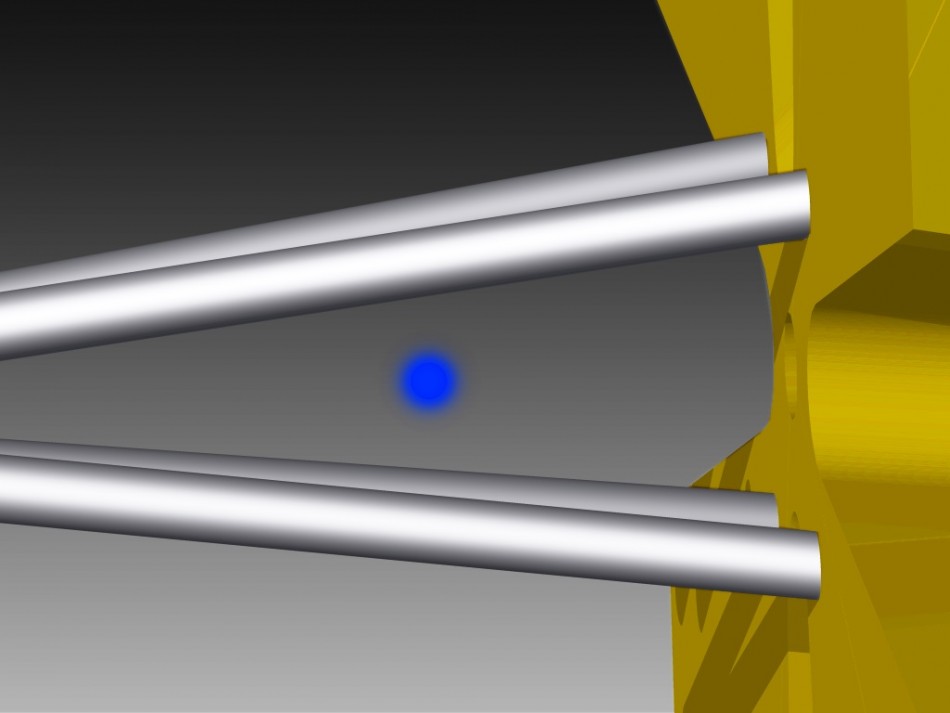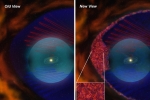One-Atom Engine World's Smallest: Could It Be More Efficient Than One Running On Four Cylinders?

A theoretical physicist in Germany has envisioned a one-atom engine he claims would be more powerful than the combustion engine. In his paper in Physical Review Letters, Johannes Rossnagel claim that that such an engine would be at least two times as efficient as a conventional engine operating according to the laws of thermodynamics. Rossnagel, from the Institute of Physics, Johannes Gutenberg University in Mainz, Germany, describes a hypothetical engine consisting of a calcium ion forced to oscillate between two laser fields, one heating it, the other cooling it. The fluctuating temperatures would expand and contract the atom, impelling it to race back and forth madly between the lasers, emitting energy.
Like Us on Facebook
Such action, Rossnagel claims, would increase the efficiency of the "machine" so much that it would surpass the so-called Carnot Limit: the maximum efficiency any engine can have according to the laws of thermodynamics. "In some sense compared to an car engine, the ion is the cylinder, or piston, and a flywheel at the same time," Rossnagel told the International Science Times in an email interview. "So it expands and contracts as a gas in a cylinder and, at the same time, accumulates the energy produces per cycle an oscillation as a flywheel does," adding, "This is all theoretical and demonstrates that it should be possible to build an engine out of one particle. It also demonstrates that non-conventional and tailored heat baths gives the possibility to increase the power above the level which can be reached by classical, macroscopic engines."
The physicist has no qualms about calling his brainchild an engine. "A heat engine converts a difference in temperature between two heat baths into mechanical work," Rossnagel said. "That is what our engine does. It converts different temperatures, caused by lasers or electrical noise, into a movement — in this case an oscillation — which can be transferred to other systems as useful work." And all he has to do to make that ion dance is to give it a little squeeze.
"When squeezed, the state of the ion oscillates between having a precise position and a momentum which is smeared out," Rossnagel said, "and having a smeared out position and a precise momentum." Although it's hard to imagine the idea of squeezing and smearing powering a car, it's not so hard to do when contemplating refrigerators. Rossnagel himself thinks his idea is better-suited to appliances than to automobiles — no doubt a great relief for the oil industry. Even then, it might not be that practical. "One would need a full lab of lasers and electronics to drive it," conceded Rossnagel. "But the cycle can be reversed: Then it acts like a heat pump or refrigerator. Such a heat pump could be used to cool other nano- or micro-sized systems like ion crystals or micro-mechanical oscillators."
Indeed, similar work in quantum mechanics has been done with refrigerators. Last August, Cornell researcher Dr. Luis A. Correa and his colleagues published a paper in the journal arXiv that used quantum-enhanced absorption refrigerators and in a revision of that paper in January, Correa wrote, "Thermodynamics....sets the boundaries between possible and impossible in macroscopic aggregates of matter. Close analogues of those fundamental laws are now being established at the level of individual quantum systems. ... We also show how those bounds may be pushed beyond what is classically achievable, by suitably tailoring the environmental fluctuations via quantum reservoir engineering techniques."
© 2012 iScience Times All rights reserved. Do not reproduce without permission.

25 Year Study Reveals Eco-Farming To Be Economically Feasible And Sustainable

How Methane-Producing Microbes Caused The Largest Mass Extinction The World Has Ever Seen

Terrifying Animatronic Robot Dances To 'Blurred Lines,' Causes Nightmares [VIDEO]

Scientists Demonstrate Three-Way Quantum Communication: What's Faster Than The Speed Of Light?

Woolly Mammoth DNA To Be Cloned, Then Joined With Elephant DNA To Create New Creature

Oculus Rift Headset Will Take You On A Trip To Space, All From The Comfort Of Your Couch



![How to Turn Your Tap Water Faucet Into a Coffee Spout [VIDEO]](../../../cdn-sub/data/thumb/mainpage/6005-150100-coffee.jpg)

